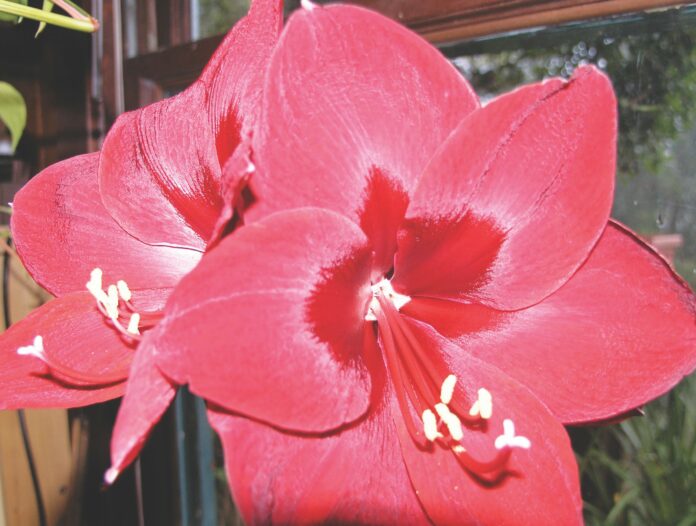I have a cat named Archer. He’s a little too vocal sometimes but thankfully, he doesn’t chew on plants. If he did or if small children were about during the holidays I’d be sure to put some of my holiday plants out of their reach. Which plants are toxic and which are safe around pets and children?
Some years I have paper white narcissus decorating my house during the holidays. At other times I’ve had a pink jasmine wreath or one with holly, ivy and evergreens inside. Lovely cyclamen plants are available everywhere as are poinsettia. Christmas cactus are blooming at this time of year also. Which of these plants do I need to watch out for?
The classic plant to decorate our homes at this time of year is the poinsettia. Are poinsettia poisonous? Ohio State University conducted extensive research and concluded that although poinsettia sap from leaves and flowers might give you a stomach ache if you ate them they won’t seriously hurt you. The sap may cause a rash if it comes in contact with the skin on some people. With this in mind, you should keep poinsettia plants out of the reach of curious pets and small children.
Poinsettia do hold up well either as a cut flower or a living plant. Mostly it’s too cold here in the mountains for poinsettia to survive outside at night being native to Mexico but they thrive in the warmth of the house. They need a bright spot and the soil should be allowed to dry slightly, but not completely, between waterings. Deprive them of either of these requirements and the lower leaves will yellow and drop. Also be sure they aren’t sitting in water at the bottom of the container. Poinsettia are brittle and if you break off a branch, sear the end of the stem with a flame and it will hold up quite well in a vase or arrangement.
According to the Pet Poison Helpline cyclamen are mild to moderately toxic to dogs and cats if ingested but it’s the root or corm that is especially toxic if ingested in large quantities. Pets and people react differently and it is unlikely that children would eat the corm and be affected.
My beautiful amaryllis flower and leaves are safe but the bulb is toxic. Amaryllis bulbs contain the same alkaloid that is found in narcissus and daffodil and is the reason deer know to leave them alone. Ingesting a small amount will produce few or no symptoms, however.
Azalea leaves are toxic and should be kept away from pets and small children. Holly berries are toxic if eaten in large quantities. Same for mistletoe, ivy and pink jasmine. Christmas cactus are safe except the berries from a pollinated flower.
Mistletoe contains multiple substances that are toxic to both dogs and cats, It can cause severe intestinal upset as well as a sudden and severe drop in blood pressure, breathing problems and even sometimes hallucinations. If a large amount of mistletoe or ivy is ingested, seizures and death may follow. The leaves and berries of holly and mistletoe plants, even dried, should be kept well out of your pet’s reach.
You can spray a plant with cayenne pepper dissolved in water if your pet is especially persistent to discourage them. While serious complications aren’t likely with holiday plants it’s still best to keep them away from small children and out of your pet’s reach.













